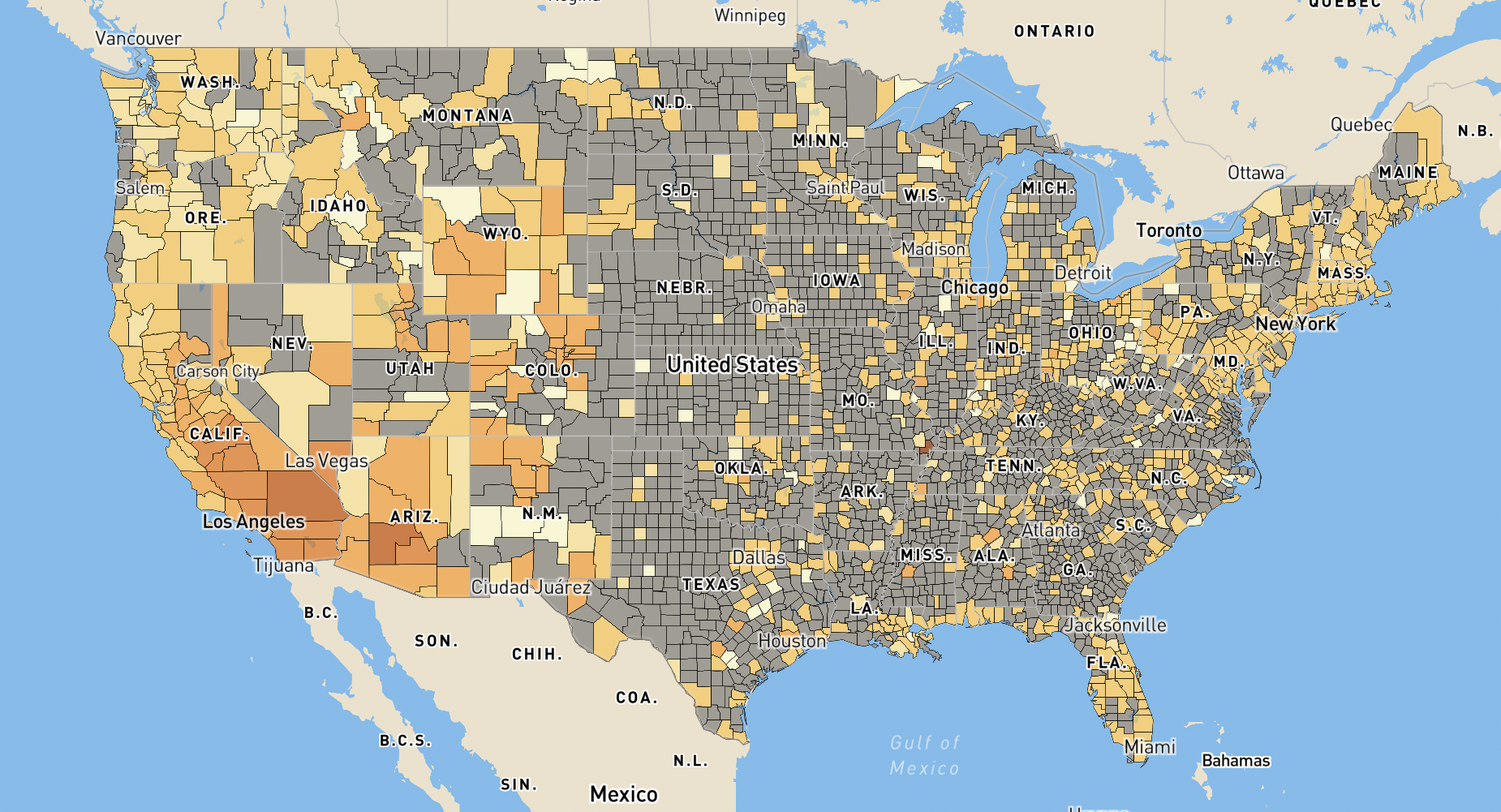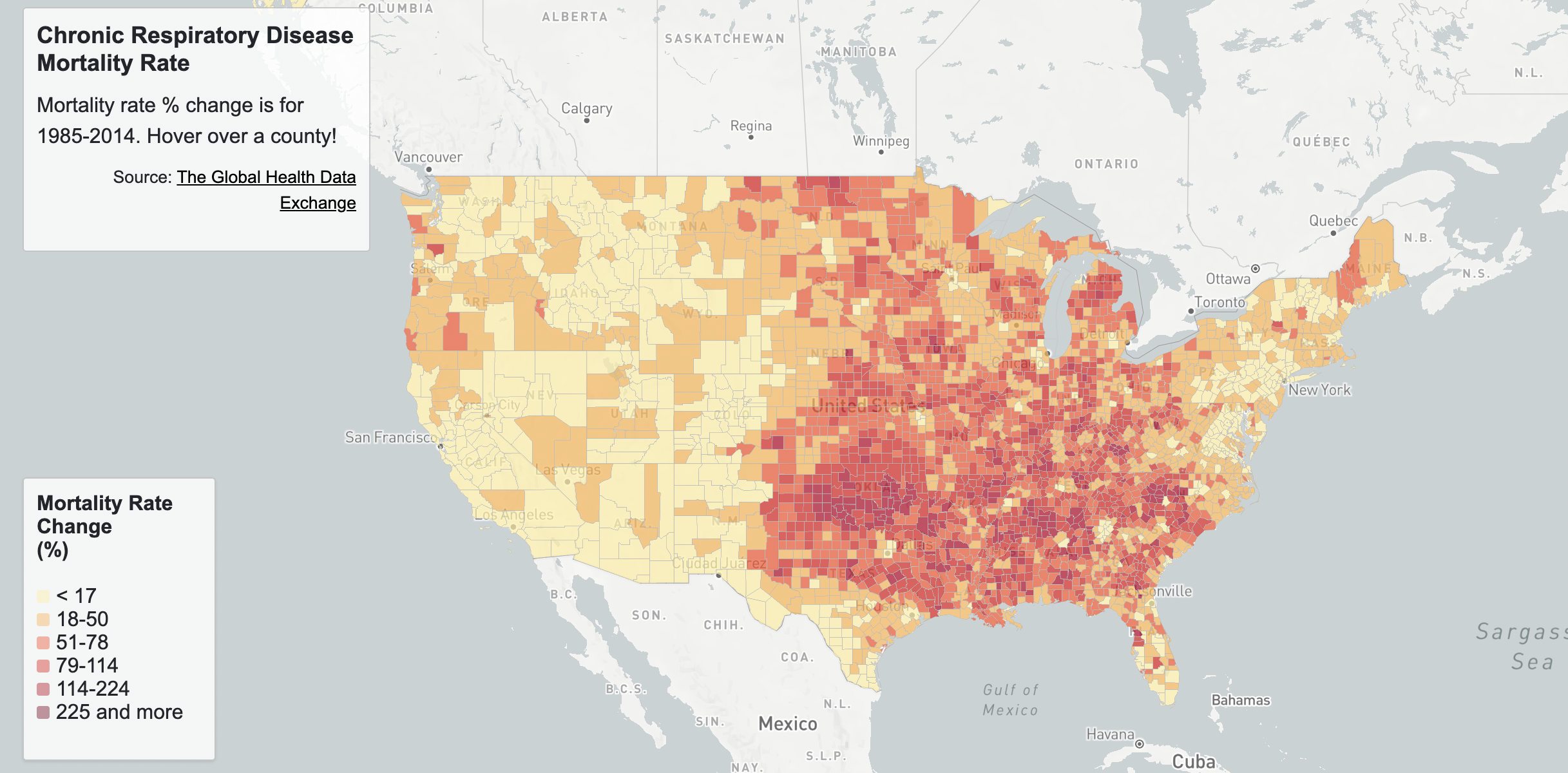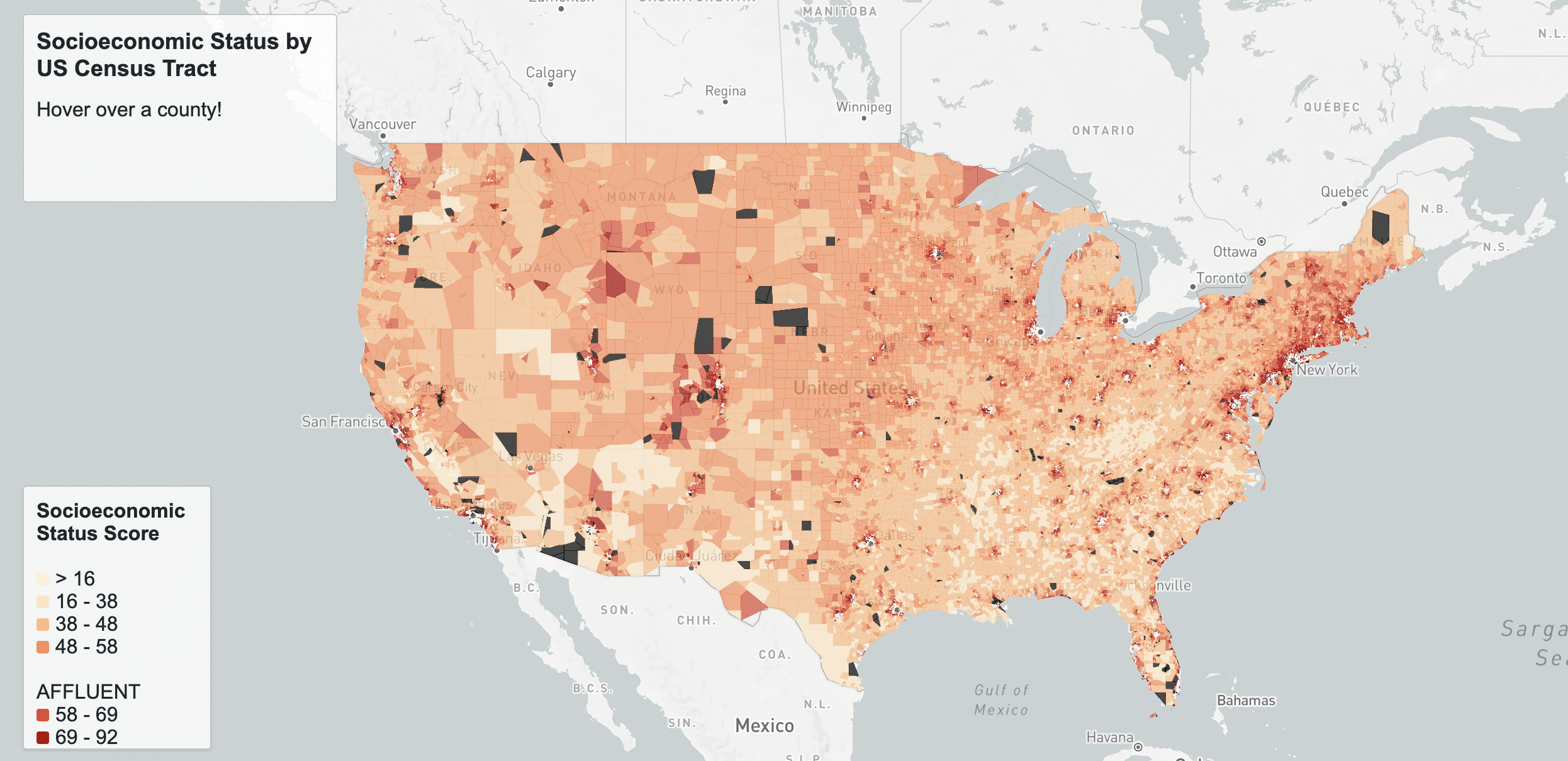Air Pollution Data and AQI
The United States Environmental Protection Agency (EPA) has developed the Air Quality Index, or AQI that ranges from 0 to 500. The AQI is divided into six categories varying by severity of health concern. An AQI value over 300 represents hazardous air quality and below 50 the air quality is good. EPA establishes an AQI for five major air pollutants regulated by the Clean Air Act. Each of these pollutants has a national air quality standard set by EPA to protect public health: ground-level ozone, particle pollution (also known as particulate matter, including PM2.5 and PM10), carbon monoxide, sulfur dioxide, and nitrogen dioxide.

The map below introduces the topic of air pollution in the United States by giving the audience a look at a 10 year change in air quality in the United States from 2010 to 2020. This provides background information on the current trends in air quality over time in recent years as well as the current state of air quality in the United States today. One interesting insight from this map is that in 2010 the median AQI was 38 with the highest AQI being in Riverside, CA at 87. 10 years later in 2020, the median AQI was 33 with the highest at 117 in New Madrid County, MO.




